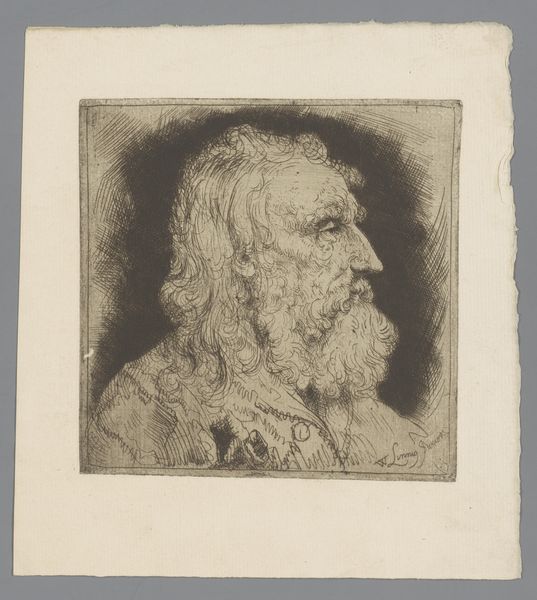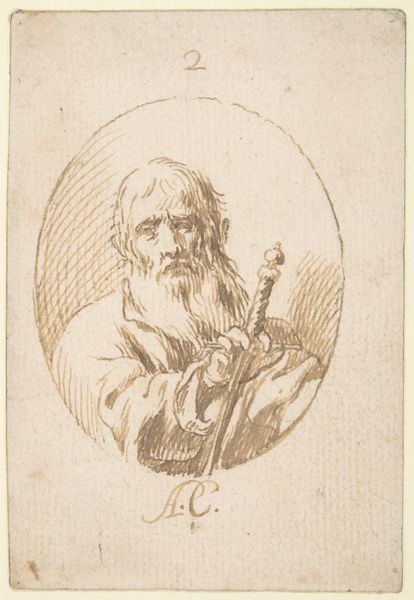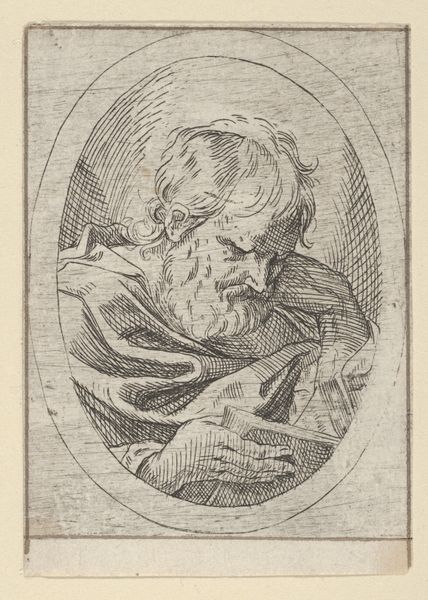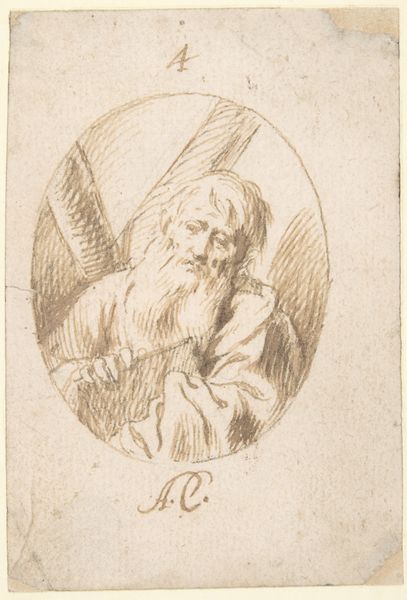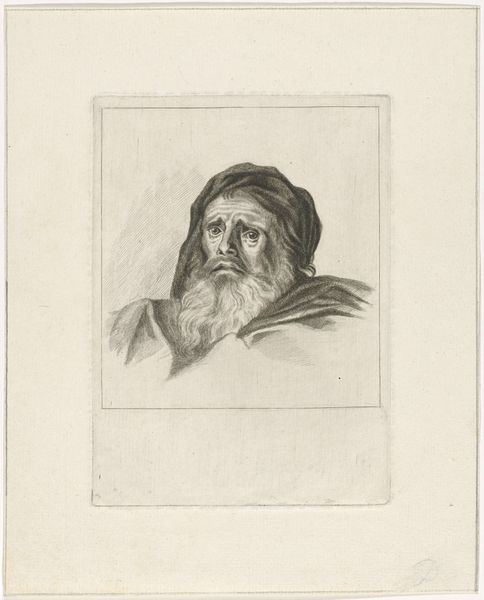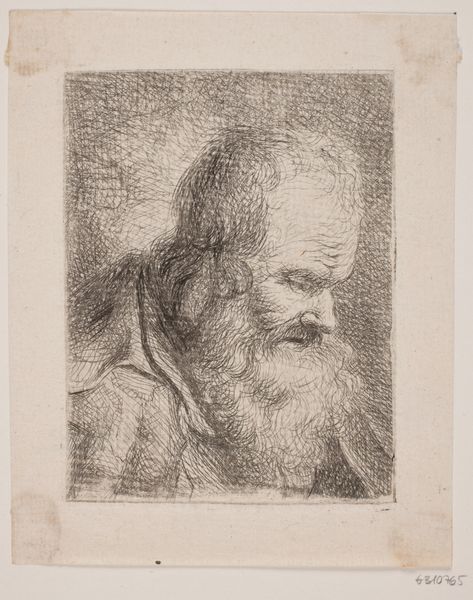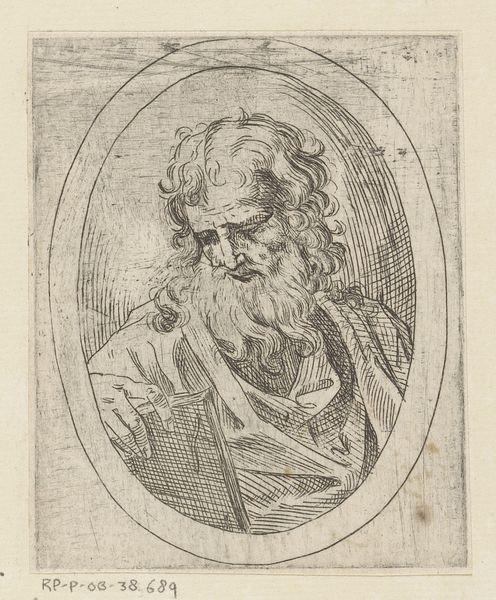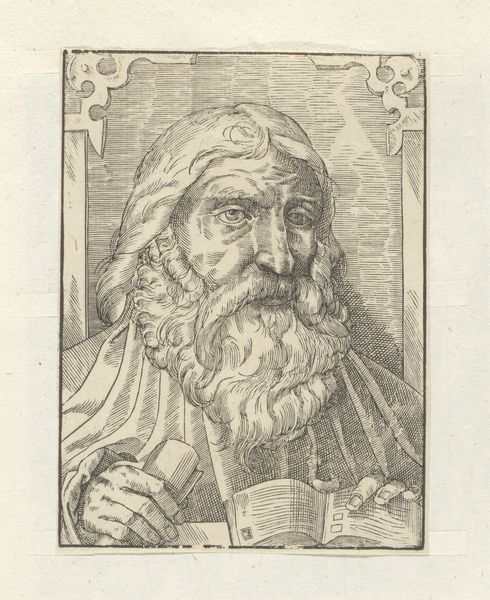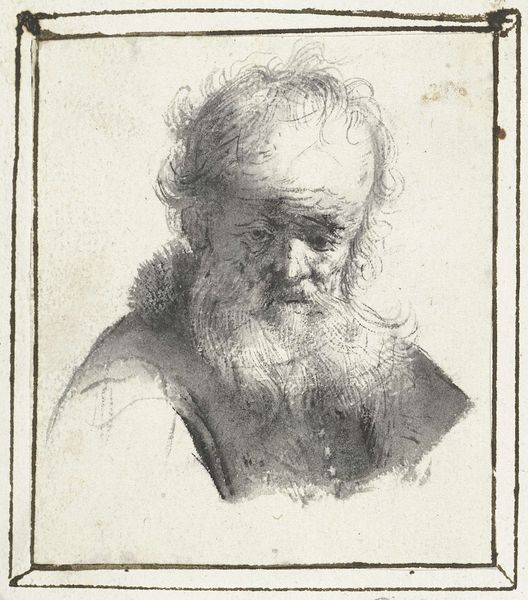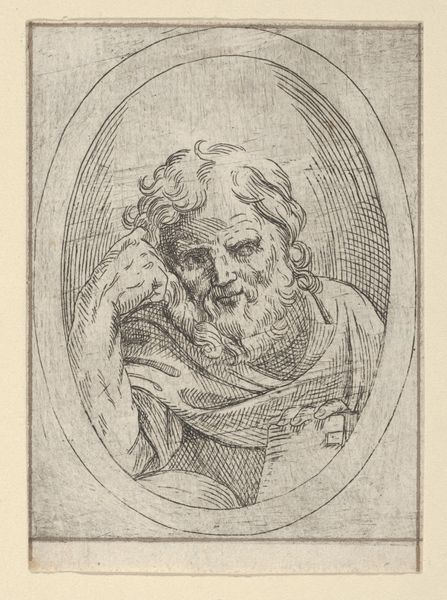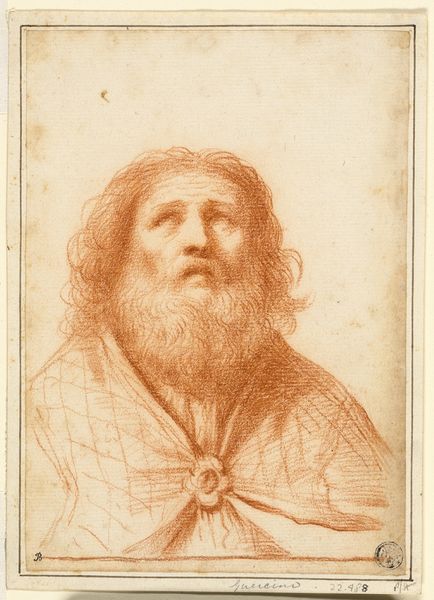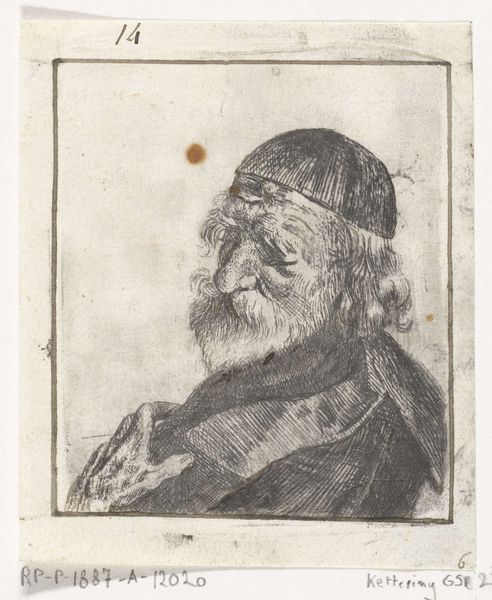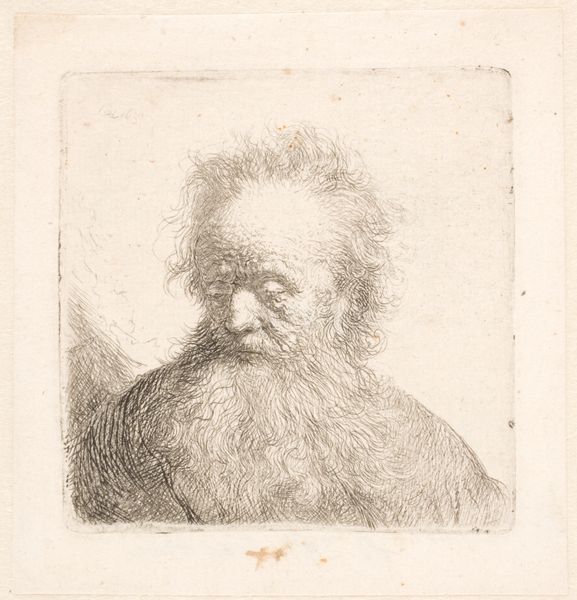
Dimensions: 2 × 1 1/2 in. (5.08 × 3.81 cm) (image)2 5/8 × 2 1/4 in. (6.67 × 5.72 cm) (sheet)
Copyright: Public Domain
Curator: This engraving from 1772 by Benigno Bossi, held here at the Minneapolis Institute of Art, is titled "Bearded Man Holding a Book". It's a striking example of the artist's printmaking skill during the Baroque period. Editor: It's immediately captivating. The sepia tones create such an intimate atmosphere. I'm struck by how the sharp, angular lines around his face contrast with the soft curves of his beard and drapery. It lends him this noble yet vulnerable quality. Curator: Bossi, known primarily as a painter in court circles, shows an incredible command of line and shading here. Prints such as these would have served as both artistic explorations and, crucially, a means to disseminate imagery and ideas widely during the late 18th century. It allowed works and images to become more widely seen and appreciated across regions and cultures. Editor: The use of line is indeed masterful. Look at the concentration of hatching around the figure's eyes and cheekbones. It creates depth, emphasizing his aging skin and the profound gaze, while the highlights on his drapery suggest a soft light source from above, almost spotlighting him. Curator: The fact that he's holding a book is also significant. In the Enlightenment, the book symbolizes knowledge, wisdom, and reason—ideals that were considered socially and politically revolutionary for a rising public sphere. This portrait, I would argue, is both an exercise in skill and, through its subject, a tacit endorsement of such Enlightenment values. It's as much an image of the man as it is of an ideal. Editor: Precisely! Formally, this ideal also relates to the subject's averted gaze. He's looking off into the distance as if contemplating a deeper thought prompted by this source of wisdom that he holds. You might even be tempted to describe that glance as a gaze into the sublime. Curator: Very insightful. When contextualizing the image it's key to remember the social value and cultural capital ascribed to possessing and reading books in the 18th century. Editor: Indeed, together, its structural harmony, dramatic illumination, and texture give it that almost cinematic impact—that immediate, arresting quality that draws you in to linger. Curator: And perhaps invites one to consider the legacy of how portraits help solidify class structures and social standing. Editor: In conclusion, that interplay of artistic and intellectual context renders the piece really thought-provoking.
Comments
No comments
Be the first to comment and join the conversation on the ultimate creative platform.
